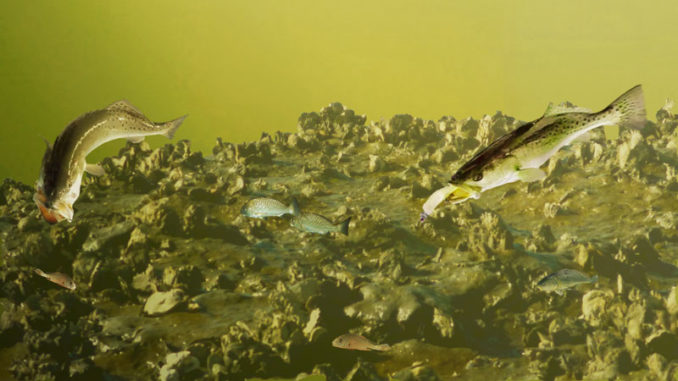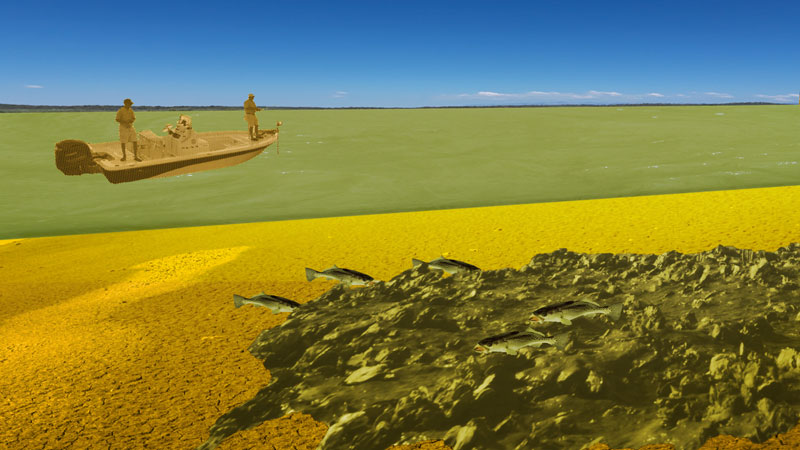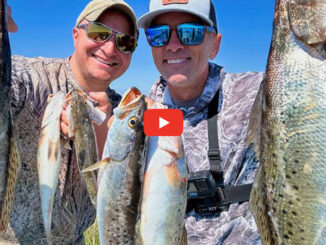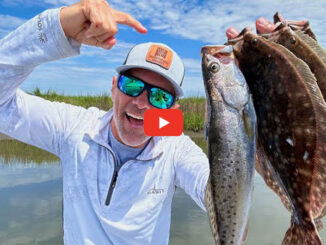
If it weren’t for oyster reefs, anglers would spend a lot of boring days in the summer doing menial home-improvement projects like painting the shed, mowing the lawn or weeding the garden.
But thank heavens oyster reefs exist, and because they do, fishing them is as much a staple for summer speckled trout anglers as fried rice is at an Asian buffet.
They’re alive!
And there’s good reason: oyster reefs in salty bays are alive with organisms at every level of the marine food chain, and with specks being at or near the trophic position in most bays, they are particularly drawn to these vibrant communities.
Oyster reefs attract baitfish because they provide relief.
Imagine you’re a young croaker swimming around on the bottom of the sea floor. There’s nothing but flat, sandy bottom for acres around. You’d feel pretty exposed, wouldn’t you?
Now imagine you come across an oyster reef 20 yards in diameter with dimples, bumps, slits, coves and a big hump right in the middle. There are plenty of places for a young croaker to hide, aren’t there?
Apparently so, because you instantly see so many of your brothers and sisters.
Well, here’s the dirty little secret that you’re probably not aware of: the trout also know oyster reefs are great places for bait to hang out, so the very structure that provides you safety also seals your doom.
Think like a trout
Each trout knows that if he waits long enough, he’ll pick off croakers one by one as they leave the safety of their hidey holes and mill about for food.
But specks also know there are hot spots on any reef, places where the bait congregates for one reason or another.
These are often found on the edges of humps.
Much like points on islands, humps on oyster reefs provide current breaks behind which weary baitfish can hide. Specks crowd these areas to feast on the resting baitfish, as well as pick off new ones being swept against and around the hump by the tides.
This is why there might be five boats fishing a particular reef, but one is outcatching all the other boats three to one. That boat is likely located in casting distance of some type of current break on the reef.

Fishing oyster beds
By Jon Miller
Oyster beds and reefs provide habitat for many species, including some favorite foods of speckled trout: croakers, menhaden, anchovies and shrimp. These species not only find protection from predators within the oyster bed structure, but some of their favorite food also lives on and around the oyster shells: barnacles, mussels and crabs. A healthy oyster bed is a smorgasbord for some species of larger fish, such as black drum and sheepshead, which not only feed on the small fish and crustaceans, but also on shellfish and in the case of back drum, on the oysters themselves.
Although a healthy oyster bed is prime feeding ground for speckled trout and redfish, even shell pads can create a productive feeding habitat. For instance, the shell pads built to support oil and gas rigs have many of the same habitat characteristics of oyster beds and can be very productive fishing spots for inshore anglers.
Oysters are filter feeders and have an incredible capacity to clean the water around them. A single oyster can filter particles out of as much as 50 gallons of water per day. Since speckled trout are primarily line-of-sight, ambush predators, the water cleaning capacity of oyster beds alone make them prime fishing spots for anglers during years of abundant river water in the estuary.
Speckled trout are often found at the edges of oyster beds and shell pads, where they can hide below the plateau of the bed or pad. From this position, their dark tops camouflage them against the bottom, and they can ambush bait that swims over the edge. Match the movement of baitfish by positioning the boat off the bed and casting onto the bed. Working the bait back to the boat will cause it to swim over the edge of the bed and initiate a trout strike. At times, shoals of trout will hunt across the surface of the oyster bed or shell pad, so a long cast onto the bed or pad will ensure that your bait finds these shoals also.
A variety of baits are used to fish oyster beds including swimbaits on jigs, jerkbaits and live bait such as shrimp and croakers. If the oyster beds are in water less than 6 feet of depth, swimbaits under popping corks can also be very effective.


